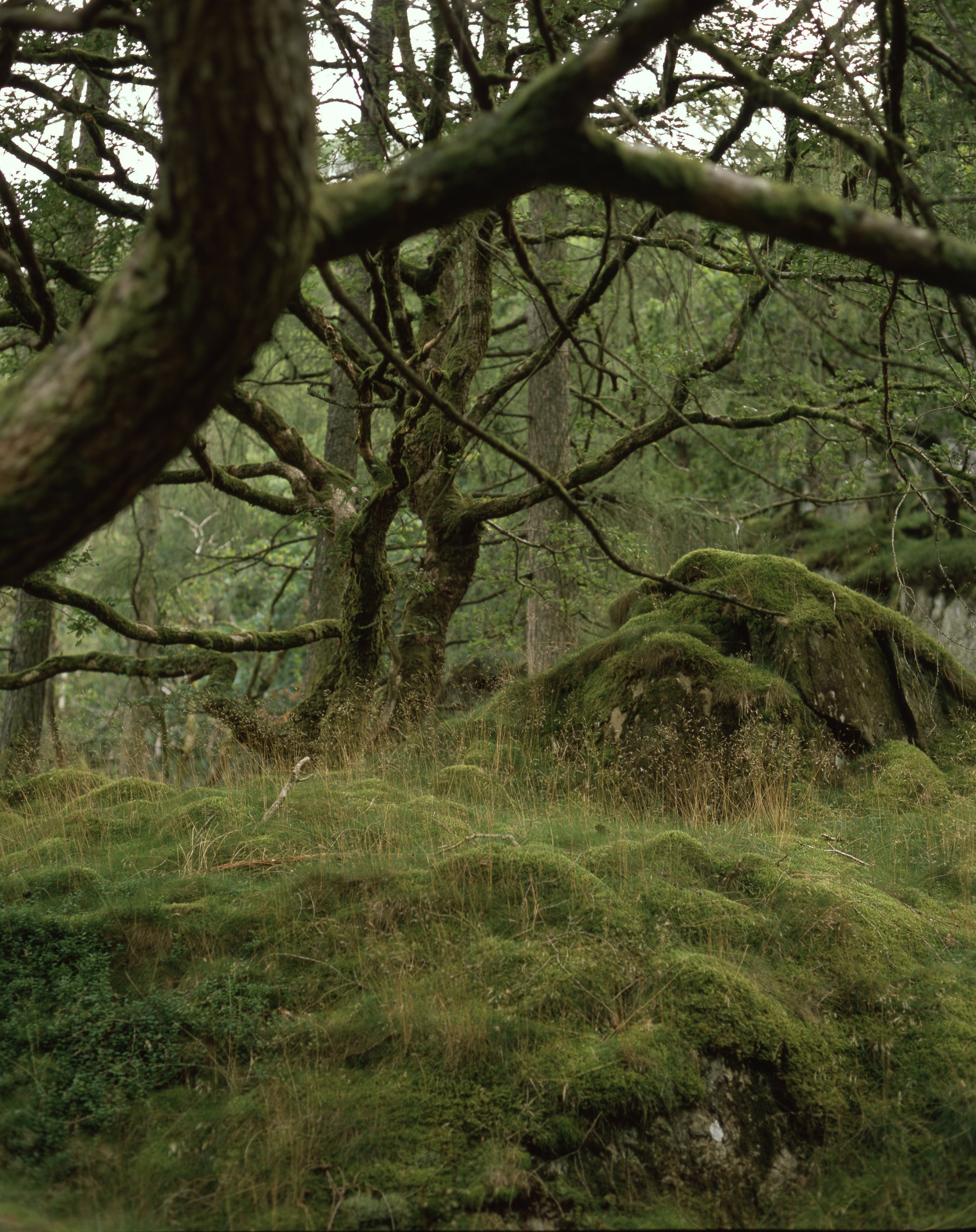
F O R E S T
I first became aware of epiphytes in Nara, Japan, in 2009. Walking through a stretch of primeval forest behind the Kasuga-Taisha, I saw what I first thought were ‘hairy’ trees. In fact, these trees were covered in epiphytes: plants that grow on other plants, without causing them damage. I saw more of these gnarled and hairy boughs on trees farther afield in the Kansai region of Japan, including Kyoto and Himeji. A brief spell of research informed me that many of Japan’s primeval forests contain similar ecosystems, and that all of Japan’s central and outlying islands are within what is called a ‘temperate’ zone - a seaboard area with a specific range of annual temperatures and rainfalls. For this reason, Japan is abundant in rich, verdant forests - both coniferous and broadleaf. What I didn’t realise at the time was that the western seaboard of Britain shares this temperate ‘hyper-oceanic’ climate, characterised by the warm and damp weather systems fed to the islands by the Gulf Stream.
On returning to the UK in 2019, I wanted to better understand Britain’s own temperate rainforests. The deep hues of the green forests I had visited in Wales and Cumbria in my youth had been largely absent where I grew up in the southeast, and I wanted to better understand their absence.
During 2019, I visited Dartmoor, an area with an inland oceanic microclimate and unique topography. Fragments of these woodlands, these ‘temperate rainforests’ existed there, clinging to the margins of exploitable land. I began making research visits in 2021, starting with Wistman’s Wood.
Above: Nara, Japan, 2009.
Wistman’s Wood is an extreme example of a temperate rainforest'; bent and bowed sessile scrub oaks (Quercus petrea) were made double-thick again by the sheer density of epiphytic matter on their surfaces; mosses, lichens and ferns, such as Polypodium vulgare. The day was a mixture of sun, cloud and sudden rain, but the forest interior retained its own light, something entirely separate from the changing conditions above the canopy.
In 2021, I visited similar ecological zones in the locality of Keswick, Cumbria. I noted that these zones required specific conditions, including the presence of flowing freshwater and being situated towards the lower parts of hills or inclines, thus creating a convection of dampness, allowing mosses to proliferate.
Dartmoor, 2021.
I paused the research and photographing of this as-yet untitled project at the end of 2021, in order to focus on completing an MA in photography at the UWE, in Bristol. Having graduated in summer 2023, I have now returned to documenting these temperate rainforests across the western seaboard of the British Isles.
These unique ecosystems once covered far-reaching stretches of Britain, but have been gradually cleared through successive ages of human habitation. In the last century, deforestation for grazing, agriculture and man-made timber plantations has decimated almost all that remained of Britain’s temperate rainforests. However, their struggle isn’t inherently climate-related; it is deforestation and grazing that threaten them. Put simply, if humans did not interfere with these spaces, they would return. Temperate rainforests in Britain are not fundamentally incompatible with the reality of our warming earth. Contrastingly, their rich layers of humus and abundance of unique plant, fungus and lichen life-forms make them an indispensably valuable carbon sink, absorbing and storing CO2 like a verdant, mossy sponge.
Keswick, Cumbria, 2021.

In 2023, I a continuing to research, visit and photograph temperate rainforest zones along the western seaboard of Great Britain. With this ongoing body of work, my aim is to offer visually rich insights into these rare and ecologically significant ecosystems. Efforts from multiple organisations including the Woodland Trust, PlantLife and the RSPB are focusing on how to protect and restore patches of temperate rainforest in the UK, so that they may grow from a patchwork to a network, offering our bioregion a return to a more stable, natural state.
I am actively looking to secure funding for the continuation of this body of work, and seek collaboration with organisations who are working towards offering a better public awareness of the value of temperate rainforests in the British Isles. If you would like to contact me, please use my contact form, or send an email to hello@rebeckawolfe.com.



